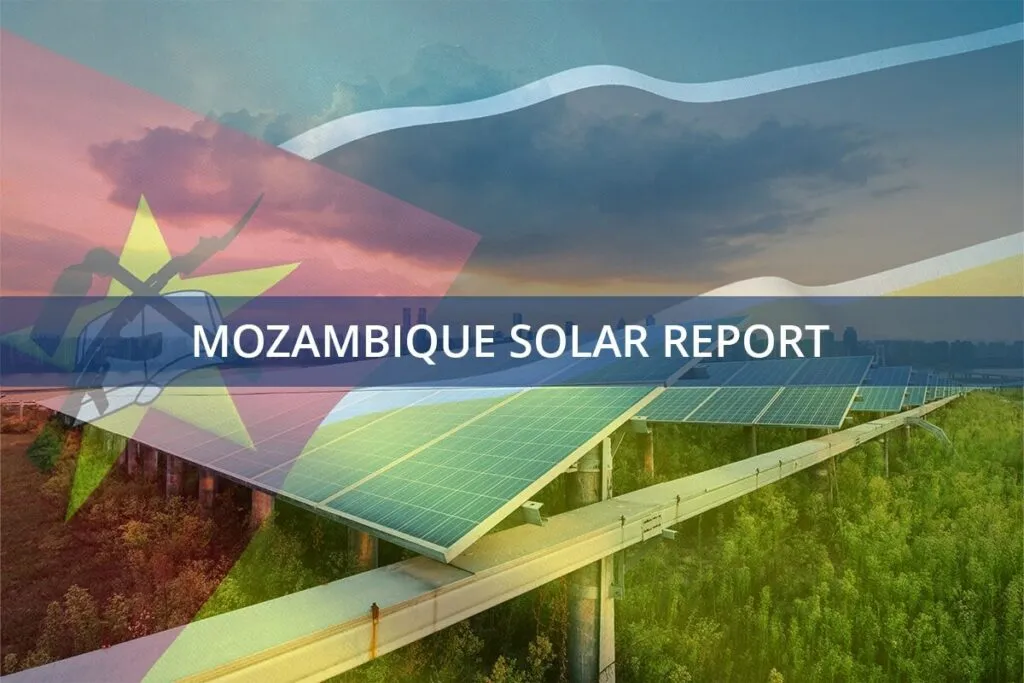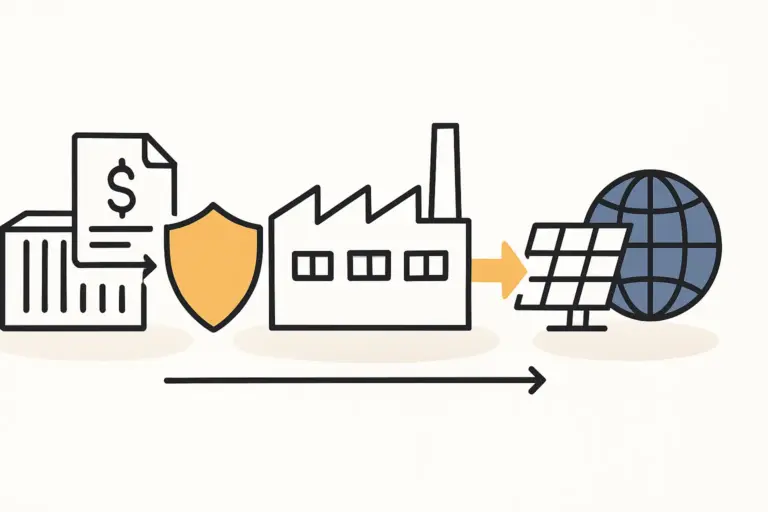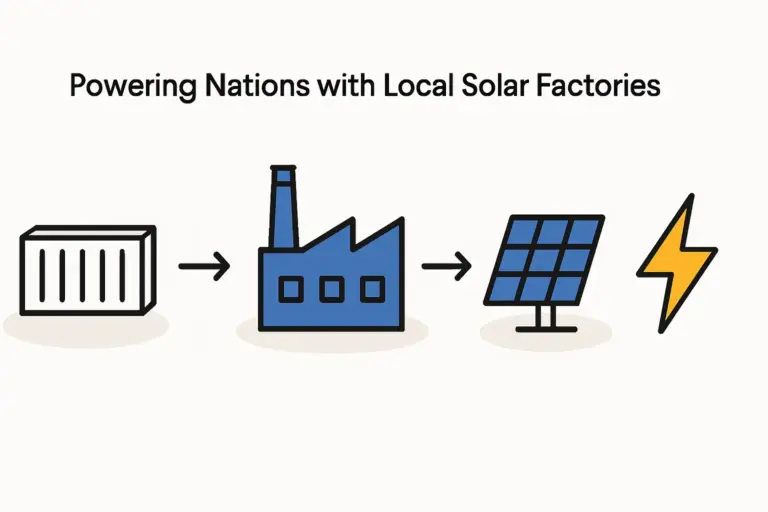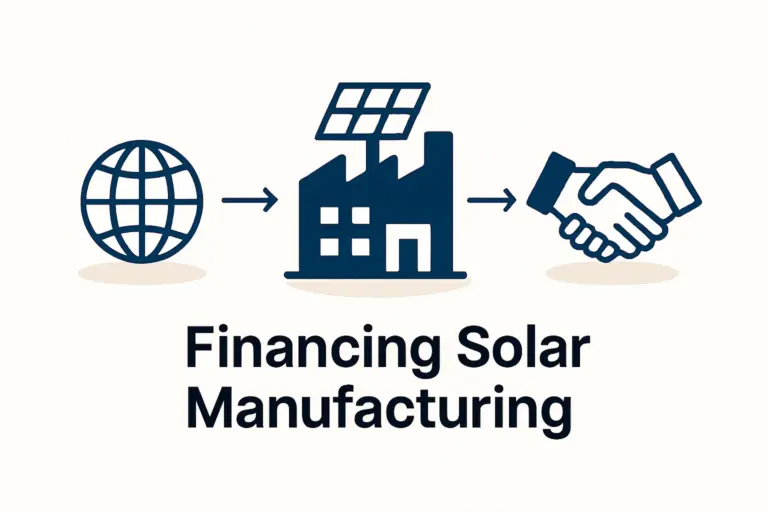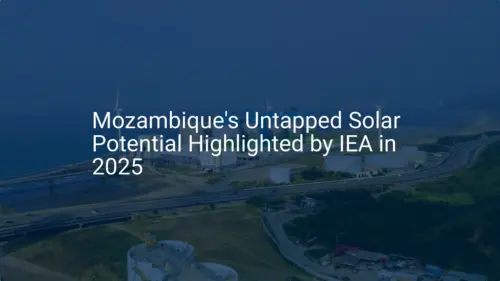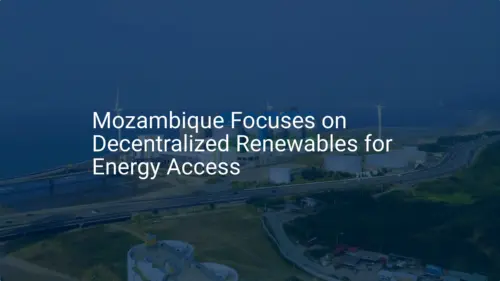For entrepreneurs considering the solar manufacturing sector in Africa, the vision is often clear: a modern facility producing high-quality photovoltaic modules, creating local jobs, and contributing to the region’s energy independence. The business plan is sound, capital is in place, and market demand is undeniable.
Yet one hurdle can feel complex and opaque: navigating the government’s regulatory and licensing requirements. This barrier can seem daunting, filled with unfamiliar acronyms and processes. But it’s not an insurmountable obstacle—it’s a structured process that can be managed with the right knowledge and preparation. This guide demystifies the regulatory pathway in Mozambique, outlining the key agencies, required documentation, and realistic timelines for launching a solar module factory.
Understanding the Regulatory Framework: The Three Pillars of Approval
Successfully licensing a solar manufacturing plant in Mozambique hinges on securing approvals across three distinct yet interconnected pillars. While specific requirements can vary based on the project’s scale, the core journey involves satisfying the requirements of investment, industry, and environmental authorities.
-
Investment Approval: This foundational step officially registers the project and recognizes it as a valid foreign or national investment.
-
Industrial Licensing: This approval concerns the factory’s operational aspects, confirming that it meets national standards for industrial activity.
-
Environmental Permitting: This ensures the project complies with environmental protection laws, a critical component for sustainable and responsible operations.
A systematic approach that addresses these three pillars in a coordinated way turns the process from a source of uncertainty into a clear project milestone.
Step 1: Securing Investment Project Approval with APIEX
The first official engagement for any major investor in Mozambique is with the Agency for the Promotion of Investment and Exports (APIEX). This body serves as the central point of contact for investors, facilitating the registration and approval of projects.
Key Documentation for Your Investment Proposal
Submitting a comprehensive and professionally prepared Investment Project Proposal is the most critical factor for success at this stage. An incomplete or poorly justified application is the most common reason for delays. Experience from J.v.G. turnkey projects shows that a well-prepared proposal significantly reduces the risk of setbacks.
The core components of the proposal typically include:
- A Detailed Business Plan: Outlining the project’s objectives, market analysis, production capacity, and financial projections.
- Proof of Capital: Evidence of available funds to execute the project.
- Company Registration Documents: Including the Commercial Registry Certificate and the tax identification number (NUIT).
- Project Feasibility Study: A technical document validating the project’s viability.
- Shareholder and Director Information: Official identification and proof of legal standing for the project’s principals.
The Approval Process and Expected Timelines
Once submitted, APIEX reviews the proposal for completeness and alignment with national development priorities. The agency assesses the project’s economic and social benefits, such as job creation and technology transfer. With a complete and accurate submission, the approval process for an investment certificate typically takes between 45 and 60 days.
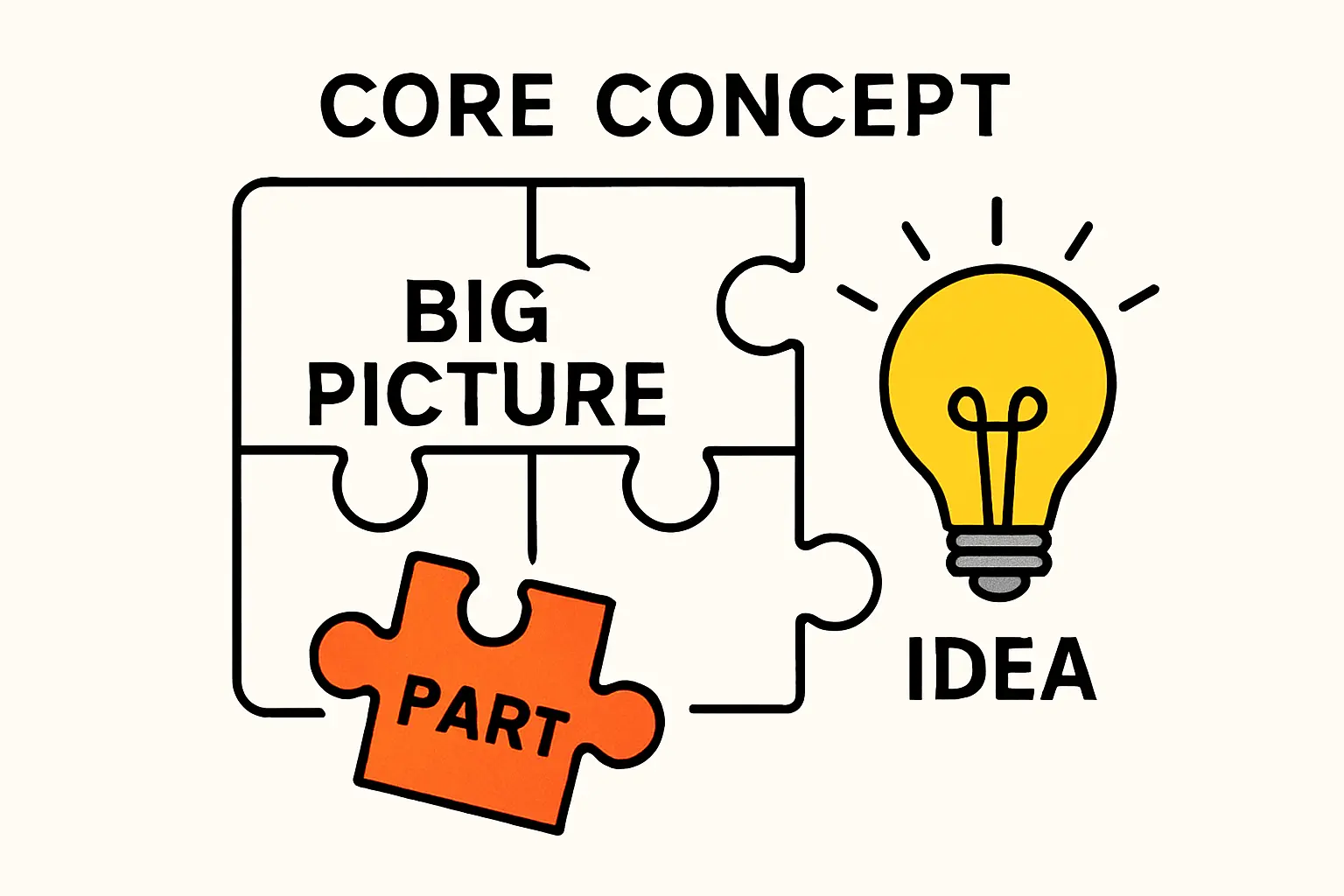
Step 2: Obtaining the Industrial License from MIMAIP
With the APIEX investment certificate in hand, the next step is securing an industrial license from the Ministry of Industry, Commerce and Tourism (MIMAIP). This license grants the legal right to operate an industrial facility.
Essential Prerequisites and Submissions
The application to MIMAIP builds on the documentation prepared for APIEX, but the ministry’s focus is more on the factory’s technical and operational specifics. Key submission documents include:
- The APIEX Investment Certificate.
- Proof of land use rights, known as DUAT (Direito do Uso e Aproveitamento da Terra).
- Detailed factory layout plans and architectural drawings.
- Technical specifications of the primary production machinery, where details related to choosing the right solar manufacturing equipment become a crucial part of the submission.
- An outline of the proposed operational health and safety plan.
Navigating the MIMAIP Review
MIMAIP’s technical departments review the application to ensure the proposed facility complies with zoning laws, building codes, and industrial standards. This phase may involve a preliminary site inspection to verify the location and its suitability. Following a complete submission, the review and issuance of the provisional industrial license usually takes 30 to 45 days.
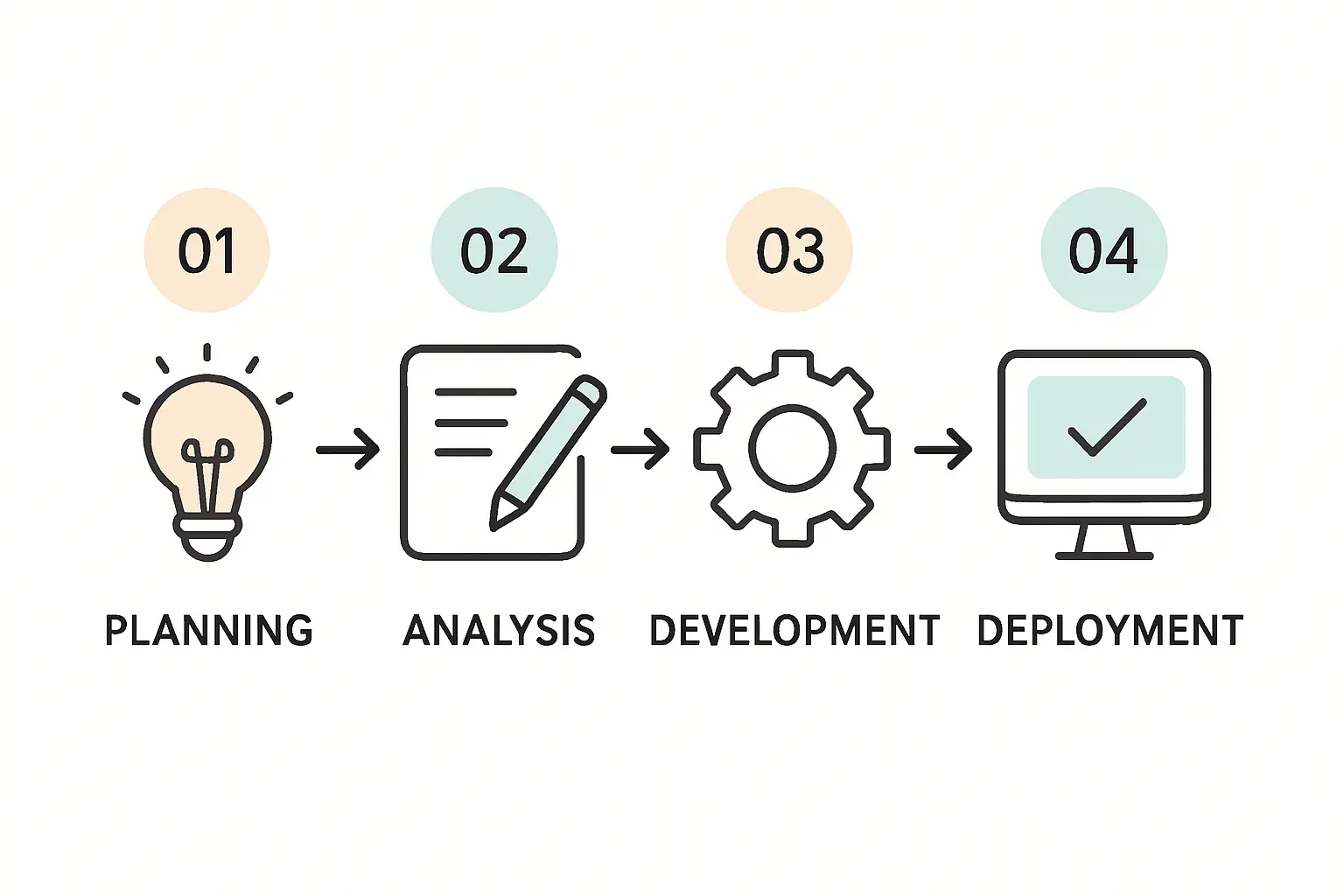
Step 3: Achieving Environmental Compliance with MTA
Running parallel to the industrial licensing process is the crucial step of obtaining environmental clearance from the Ministry of Land and Environment (MTA). This step is fundamental to demonstrating a commitment to local environmental standards—a key factor for long-term operational success across Southern Africa.
Determining Your Environmental Impact Assessment (EIA) Category
The environmental licensing process is scaled according to the factory’s potential environmental impact. Solar module assembly is generally considered a low-impact industry, though specific requirements depend on the production volume.
- Simplified Environmental Study (EAS): For small- to medium-scale factories (e.g., 20–50 MW annual capacity), an EAS is often sufficient. A typical 25 MW solar module assembly line often falls into this category.
- Full Environmental Impact Assessment (EIA): For larger-scale operations, a more comprehensive EIA is required. This involves a deeper study and often includes a mandatory public consultation phase.
The Approval and Permitting Timeline
The timeline for environmental approval varies significantly based on the required assessment level. An EAS process can often be completed within 60 to 90 days. A full EIA is a more involved undertaking, potentially taking 120 days or more, especially if it requires extensive public consultation. It is advisable to start this process early.
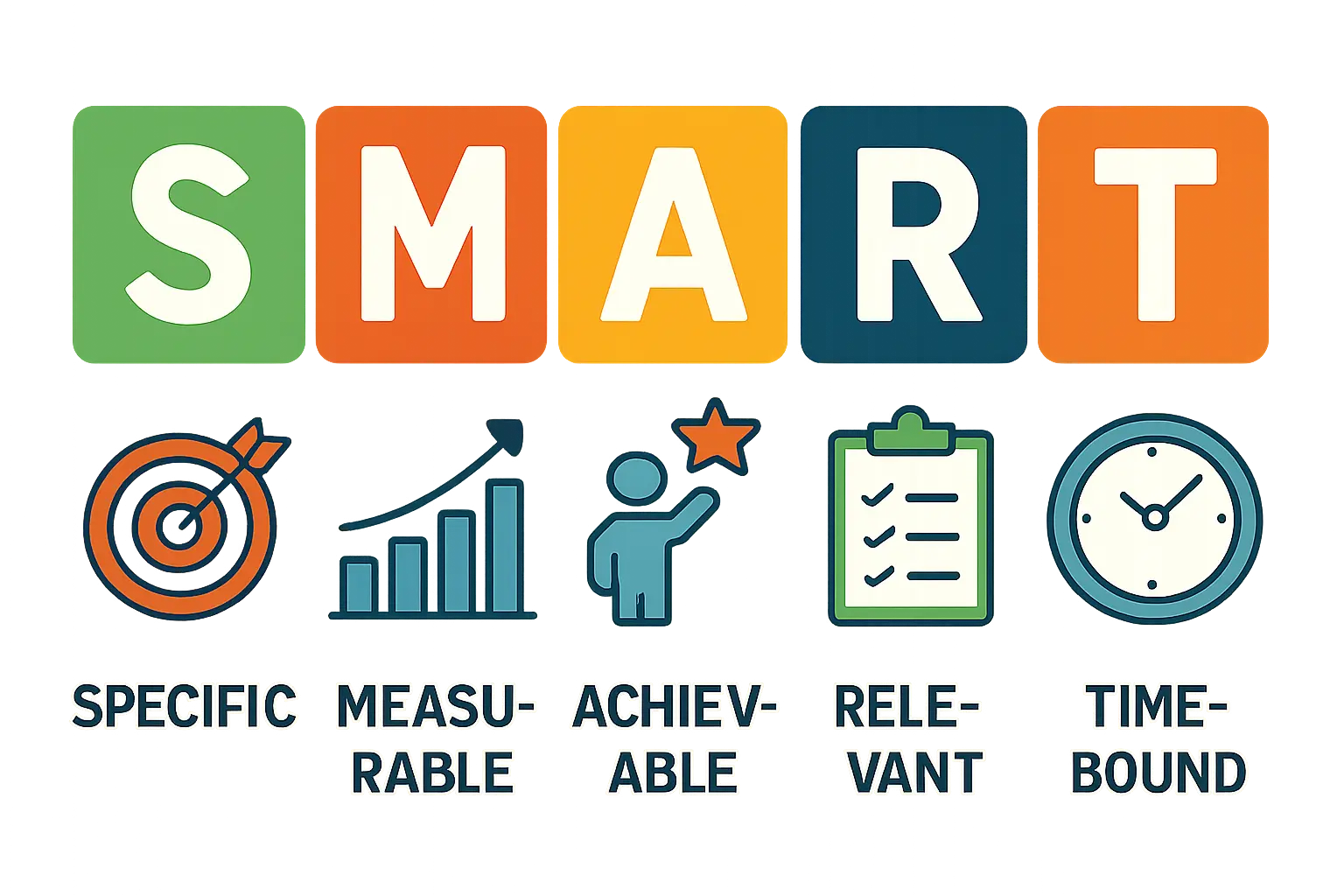
A Consolidated Timeline and Key Considerations
While each step has its own timeline, an entrepreneur can expect the entire core licensing process—from APIEX submission to receiving all three main approvals—to take approximately 5 to 8 months. This timeline assumes no major delays and depends on submitting complete and accurate documentation at every stage.
This regulatory journey is a crucial component of the broader project plan, which is detailed further in our comprehensive guide on how to start a solar factory. Engaging qualified local legal and environmental consultants who are deeply familiar with the procedures of each ministry is highly recommended.
Frequently Asked Questions (FAQ)
-
Do foreign investors face different requirements than local investors?
The legal framework for investment, industrial, and environmental licensing applies equally to foreign and national investors. However, foreign investors must meet a minimum investment threshold (historically around USD 50,000) and provide clear documentation for transferring capital into Mozambique. -
What is a DUAT and why is it important?
A DUAT (Direito do Uso e Aproveitamento da Terra) is a legal instrument granting the right to use and develop a specific parcel of land for a set period. It is not an ownership title but rather a long-term leasehold right from the state. Securing a DUAT for the factory site is a mandatory prerequisite for the industrial license. -
Can these licensing processes be expedited?
There are no official ‘fast-track’ procedures. The most effective way to ensure a smooth and timely process is through thorough preparation. Submitting complete, accurate, and professionally organized applications is the best strategy for preventing clarification requests and administrative delays. -
What role do provincial governments play in this process?
While the key ministries (APIEX, MIMAIP, MTA) are national bodies, their provincial delegations often handle the initial review and inspection processes. Maintaining good communication with these provincial offices is key to managing the process effectively. -
How do these regulatory costs affect the overall budget?
The direct government fees for these licenses are typically modest. However, investors must budget for associated professional services, such as legal counsel for company formation, consultants for preparing the EIA, and surveyors for the land title. These costs should be factored into the initial solar factory investment requirements and can represent 1–3% of the total project setup cost.
Conclusion: From Regulatory Hurdles to a Clear Pathway
The regulatory requirements for establishing a solar factory in Mozambique, while detailed, form a logical and manageable sequence. By understanding the roles of APIEX, MIMAIP, and MTA, and by methodically preparing the necessary documentation, entrepreneurs can navigate this landscape with confidence.
The process is not a barrier but a structured pathway designed to ensure that new industrial projects are viable, compliant, and beneficial to the national economy. With proper planning and expert guidance, entrepreneurs can move efficiently through the licensing stages and turn their focus to the core business of manufacturing. Platforms like pvknowhow.com provide structured learning modules that cover these preliminary planning stages, helping investors prepare the technical documentation needed to support their applications.

